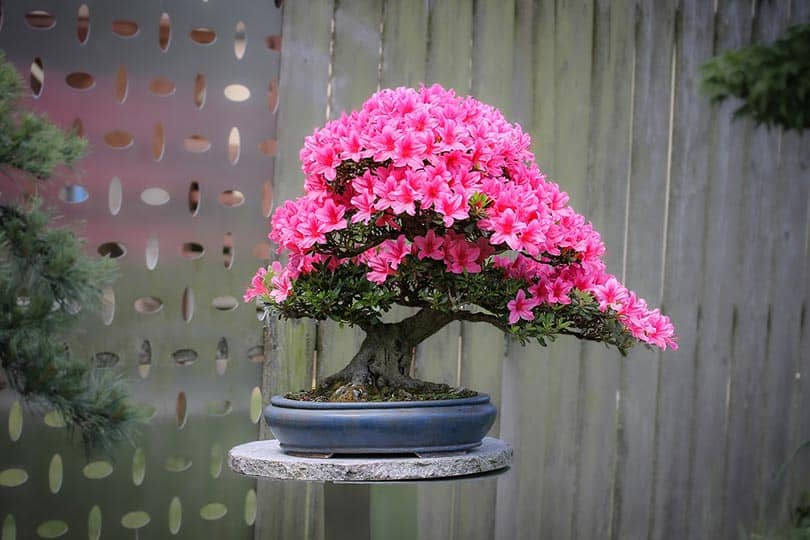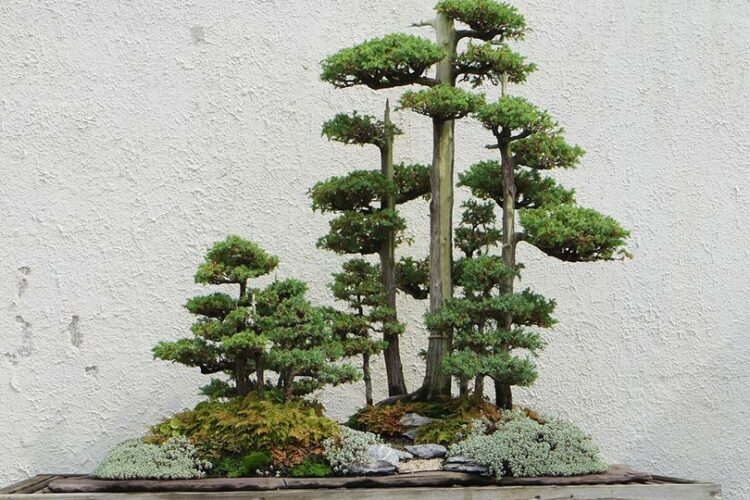If you’re interested in the art of Bonsai and you have cats, you may have found yourself wondering if it’s safe to have Bonsai trees around your cats. Unfortunately, there’s not a simple answer to that question because the safety of the Bonsai tree depends on what species of plant you’re keeping as a Bonsai. Bonsai plants come in a wide variety of options, from shrubs to full-blown trees. To ensure the safety of your cat, it’s important to know what type of plants you’re keeping.
What Bonsai Trees Are Safe for Cats?
While many traditional Bonsai options are off the table when it comes to cat safety, there are still quite a few options. Juniper trees and Fukien tea trees are cat-safe options. There are a handful of palm species that are safe for cats, including parlor palms, bamboo palms, Japanese palms, and ponytail palms. Make sure not to confuse bamboo palms with lucky bamboo, which is a toxic plant for cats. Other cat-safe Bonsai plants include prayer plants, hibiscus, Christmas, Thanksgiving, and Easter cacti, money trees, and peperomias.
What Bonsai Trees Are Poisonous to Cats?
The vast majority of plants commonly kept as Bonsai trees are not safe for cats. Sago palms are one of the top offenders, as they are deadly to both cats and dogs. Other unsafe Bonsai tree options include:
- Azaleas
- Chinese rubber plants (also called jade plants)
- Wisteria
- Ficus trees
- Boxwoods
- Fig trees
- Cherry trees
- Plum trees

What Should I Do If My Cat Chews on My Bonsai?
If you are certain that your Bonsai is a nontoxic plant, then there is little you should do except move the Bonsai to a safer place where your cat can’t access it. You can also consider spraying bitter spray and other deterrents in the area to keep your Bonsai safe.
If you keep a Bonsai variety that is toxic to cats, you should immediately contact your veterinarian or the pet poison helpline at 888-426-4435. Many vets will strongly recommend that you get your cat in the car and start driving to the nearest vet if you’re on hold with the pet poison line. This can be the time difference between life and death for your cat. If you’re not sure of the species of plant you have, make sure to take the plant with you to the vet so further investigation can be done to determine toxicity.
Ideally, toxic Bonsai species should never be within reach of your cat. Some of these plants, like sago palms, can rapidly lead to irreversible internal damage for your cat. With highly toxic plants, the risk to your cat is simply not worth it.
In Conclusion
Knowing what species of plant you’re keeping as a Bonsai is the best way to keep your cat safe. There are a variety of safe and unsafe plants available for Bonsai art. If you’re not familiar enough with the plants to identify them, make sure to get a clear answer from the garden center or shop you purchase your Bonsai plants from. Choosing to bring home only nontoxic plants is the best way to protect your cat.
Featured Image Credit: Pixabay














